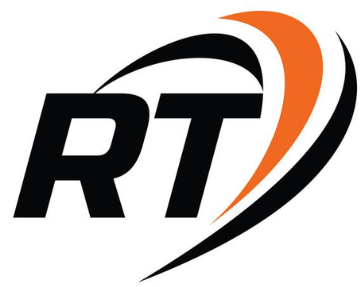I has been making a significant impact in our daily lives, whether we realize it or not. From the way we communicate to the way we conduct business and even how we access information, I has become an integral part of society. This blog post will explore the various implications, characteristics, applications, advantages, and challenges of I. We will also delve into the relationship between I and X, and how they work together to shape our world.
Implications of X

X is a term that is often used interchangeably with I, but it is important to understand the distinction between the two. While I refers to the ability of machines to perform tasks that usually require human intelligence, X refers to the branch of computer science that deals with creating intelligent machines. X encompasses a wide range of fields such as machine learning, natural language processing, and robotics.
One of the major implications of X is its potential to disrupt traditional job roles. As machines become more advanced and capable of performing complex tasks, there is a growing concern that many jobs will become obsolete. This could have a significant impact on the economy and the workforce. However, some experts argue that X has the potential to create new jobs and industries, especially in fields related to data analysis and programming.
Another implication of X is its ability to enhance decision-making processes. With the help of algorithms and data analysis, X can assist in making more accurate and efficient decisions. This is particularly useful in industries such as finance and healthcare, where decisions can have a significant impact on individuals and society as a whole.
Finally, X has the potential to bring about major societal changes. As machines become more intelligent, there will be debates surrounding issues such as ethics, morality, and the role of humans in a world where machines are capable of independent thought and action.
Characteristics of I

Now that we have explored some of the implications of X, let’s take a closer look at the characteristics of I. One of the defining features of I is its ability to learn and improve over time. This is made possible through the use of algorithms and data analysis, which allow machines to identify patterns and make predictions based on previous data.
I also has the ability to process vast amounts of data at a much faster rate than humans. This makes it particularly useful in applications such as language translation, where machines can analyze and translate multiple languages in a matter of seconds.
Another characteristic of I is its adaptability. Machines can be programmed to perform a wide range of tasks and can quickly adapt to new situations and environments. This is particularly useful in industries such as manufacturing, where machines can be used to automate repetitive tasks and increase efficiency.
Furthermore, I has the ability to work without fatigue or breaks, making it an ideal solution for tasks that require continuous attention and precision. This can lead to increased productivity and cost savings for businesses.
Attributes of X

Now that we have explored the characteristics of I, let’s turn our attention to the attributes of X. One of the key attributes of X is its ability to process and analyze large amounts of data. This is made possible through the use of algorithms and advanced computing systems. With the help of X, machines can identify patterns and trends in data that would be difficult for humans to detect.
Another attribute of X is its ability to self-correct and improve. As machines are exposed to more data, they can learn and adjust their algorithms accordingly. This allows them to continuously improve their performance and accuracy.
X also has the ability to handle complex and abstract concepts. While humans may struggle with these types of tasks, machines can easily analyze and process this information, making them valuable tools in various fields such as research and development.
Additionally, X has the potential to enhance human capabilities. By automating routine tasks and providing accurate data analysis, machines can free up time for humans to focus on more complex and creative tasks.
Applications of I

The applications of I are vast and varied, and it is being utilized in numerous industries and fields. One of the most prominent applications of I is in the field of healthcare. With the help of X, machines can accurately analyze medical data and assist in diagnosing diseases and developing treatment plans. This can lead to faster and more accurate diagnoses, potentially saving lives.
I is also being used in the financial sector to detect fraud and make more accurate stock market predictions. By analyzing large amounts of data and identifying patterns, machines can assist in making investment decisions and minimizing risks.
Furthermore, I is being utilized in the field of transportation to develop autonomous vehicles. These self-driving cars use advanced sensors and algorithms to navigate roads and make real-time decisions to ensure safety and efficiency.
Uses of X
As mentioned earlier, X encompasses a wide range of fields and has numerous uses. One of the key uses of X is in the development of virtual assistants such as Siri and Alexa. These intelligent systems use natural language processing to understand and respond to human commands, making them valuable tools for daily tasks and information retrieval.
X is also being used in robotics to create machines that can perform tasks with precision and accuracy. From manufacturing to healthcare, these robots have the potential to revolutionize industries and improve efficiency.
Another important use of X is in image recognition and analysis. Through the use of machine learning and deep learning algorithms, X can accurately identify and classify images, making it useful in fields such as security and healthcare.
Advantages of I
The advantages of I are numerous and have the potential to significantly impact our society. One of the key advantages of I is its ability to automate routine and repetitive tasks. This can lead to increased productivity and cost savings for businesses, allowing them to allocate resources towards more important tasks.
I also has the potential to improve decision-making processes by providing accurate and data-driven insights. This can lead to more efficient and effective solutions in industries such as healthcare, finance, and transportation.
Furthermore, I has the potential to enhance the overall quality of life. By automating tasks and improving efficiency, machines can free up time for humans to focus on more enjoyable activities. Additionally, I has the potential to save lives through faster and more accurate diagnoses in healthcare.
Benefits of X
The benefits of X are closely intertwined with those of I, as X is the branch of computer science that enables the creation of intelligent machines. One of the key benefits of X is its ability to automate mundane tasks, freeing up time for humans to focus on more complex and creative tasks.
X also has the potential to increase safety and efficiency in various industries. For example, self-driving cars can reduce the number of accidents caused by human error, and robots can perform tasks that may be too dangerous for humans.
Furthermore, X has the potential to create new jobs and industries. As machines become more advanced, there will be a growing need for individuals with expertise in X-related fields such as machine learning and natural language processing.
Challenges of I
While the benefits of I are undeniable, there are also challenges and concerns surrounding its development and implementation. One of the major challenges of I is the fear of job displacement. With machines becoming more advanced and capable of performing tasks traditionally done by humans, there is a concern that many jobs will become obsolete.
Another challenge is the lack of regulations and ethical guidelines surrounding the use of I. As machines become more intelligent and autonomous, there is a growing need for ethical considerations regarding their decisions and actions.
Additionally, there is also a concern about privacy and security when it comes to the use of I. As machines analyze and store vast amounts of data, there is a risk of this information being misused or falling into the wrong hands.
Obstacles of X
Similarly, there are also obstacles that must be addressed in the development and use of X. One of the main obstacles is the lack of data. In order for machines to learn and improve, they need access to large amounts of data. However, in some industries, this data may not be readily available or may be difficult to obtain.
Another obstacle is the complexity of algorithms and programming required for X. This field requires highly skilled individuals with expertise in computer science and mathematics. As such, there may be a shortage of qualified individuals to develop and implement X-related projects.
Finally, there is also a concern about the potential bias in data and algorithms. As machines learn from data provided by humans, there is a risk of this data being biased, leading to biased decisions and outcomes.
Conclusion
In conclusion, the impacts of I and the implications of X are far-reaching and have the potential to significantly shape our society. While there are challenges and obstacles to overcome, the benefits and advancements that I and X bring cannot be ignored. It is important for us to continue exploring and developing these technologies while also addressing any ethical and regulatory concerns. With proper consideration and responsible use, I and X have the potential to enhance our lives and pave the way for a more efficient and advanced future.
Also visit for more blogs at : Seth B. Taube, an Overview

